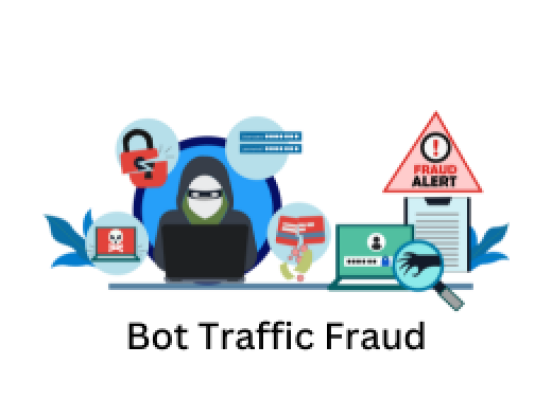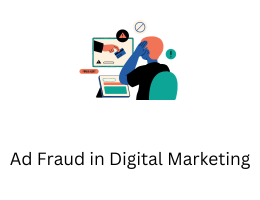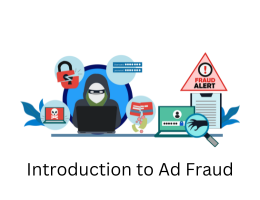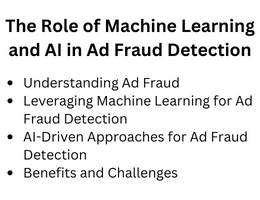
Bot Traffic Fraud
- By admin --
- Friday, 09 Feb, 2024
In the vast and dynamic landscape of digital advertising, one of the most prevalent and persistent challenges faced by advertisers and publishers alike is bot traffic fraud. Bot traffic fraud refers to the malicious use of automated bots to generate fake interactions with online advertisements, deceiving advertisers into paying for non-human traffic. This nefarious practice undermines the integrity of digital advertising ecosystems, erodes trust between advertisers and publishers, and ultimately leads to significant financial losses. In this article, we delve into the intricacies of bot traffic fraud, exploring its various forms, detection methods, and the evolving strategies employed by fraudsters.
Understanding Bot Traffic Fraud
At its core, bot traffic fraud involves the deployment of automated bots to mimic human behavior and interact with online ads. These bots can be programmed to perform a variety of actions, including clicking on ads, viewing web pages, filling out forms, or even making purchases. The primary goal is to create the illusion of legitimate user engagement, thereby inflating ad performance metrics such as click-through rates (CTR), impressions, and conversion rates.
Forms of Bot Traffic Fraud
Bot traffic fraud manifests in several forms, each with its own distinct characteristics and impacts:
-
Click Fraud: In click fraud schemes, bots simulate user clicks on ads, leading to inflated click counts and ad engagement metrics. Advertisers end up paying for these fraudulent clicks, despite the lack of genuine human interest.
-
Impression Fraud: Bots generate fake impressions by loading web pages or ad placements without any genuine human interaction. This artificially inflates impression metrics, leading advertisers to believe their ads are reaching a larger audience than they actually are.
-
Conversion Fraud: Some sophisticated bots are programmed to mimic the entire user journey, from clicking on ads to completing desired actions such as form submissions or purchases. This type of fraud leads to inflated conversion rates and can significantly skew campaign performance metrics.
-
Botnets and Traffic Laundering: Fraudsters often operate vast networks of compromised devices, known as botnets, to orchestrate large-scale bot traffic fraud. These botnets distribute traffic across multiple IP addresses, making it difficult to detect and mitigate fraudulent activity. Traffic laundering involves routing bot-generated traffic through legitimate-looking sources to evade detection.
Detecting and Mitigating Bot Traffic Fraud
Detecting bot traffic fraud requires a multi-faceted approach that combines advanced analytics, machine learning algorithms, and human expertise. Key detection methods include:
-
Anomaly Detection: Monitoring for unusual patterns or deviations from expected traffic behavior, such as sudden spikes in impressions or clicks from suspicious sources.
-
Behavioral Analysis: Analyzing user behavior patterns to identify anomalies indicative of bot activity, such as rapid, repetitive clicks or uniform browsing patterns across multiple devices.
-
IP and Device Analysis: Scrutinizing IP addresses and device attributes to identify patterns associated with known bot activity, such as high volumes of traffic from proxy servers or devices with unusual user-agent strings.
-
Fraudulent Traffic Filters: Implementing traffic filtering mechanisms to block known bot traffic sources and malicious IP addresses.
-
Verification Services: Leveraging third-party verification services that specialize in ad fraud detection and provide real-time insights into the quality of traffic and ad placements.
Despite these detection measures, fraudsters continuously adapt and evolve their tactics to evade detection. As such, ongoing vigilance and collaboration between advertisers, publishers, ad tech platforms, and cybersecurity experts are essential to staying ahead of emerging threats.
The Evolving Landscape of Bot Traffic Fraud
As technology advances and digital advertising ecosystems become increasingly complex, fraudsters are constantly innovating new techniques to circumvent detection measures. Some emerging trends in bot traffic fraud include:
-
AI-Powered Bots: Fraudsters are leveraging artificial intelligence and machine learning algorithms to create more sophisticated bots capable of emulating human behavior with greater accuracy.
-
Mobile Botnets: With the proliferation of mobile devices, fraudsters are increasingly targeting mobile advertising channels with botnet-driven schemes, such as click injections and app install fraud.
-
Cross-Device Fraud: Fraudsters are exploiting cross-device tracking technologies to orchestrate fraudulent interactions across multiple devices, making it challenging to distinguish between genuine and fake user engagement.
-
Dark Traffic Channels: Fraudsters are exploiting encrypted communication channels and obscure traffic sources to disguise bot-generated traffic, making it harder to detect and attribute fraudulent activity.
Conclusion
Bot traffic fraud poses a significant threat to the integrity and effectiveness of digital advertising, undermining trust between advertisers, publishers, and consumers. While advances in detection technologies and industry collaboration have made significant strides in combating ad fraud, the battle against bot traffic fraud is far from over. Advertisers and publishers must remain vigilant, adopt robust fraud detection measures, and stay informed about emerging threats to safeguard their investments and preserve the integrity of digital advertising ecosystems. Only through collective effort and ongoing innovation can we effectively mitigate the impact of bot traffic fraud and ensure a transparent and trustworthy digital advertising landscape.





